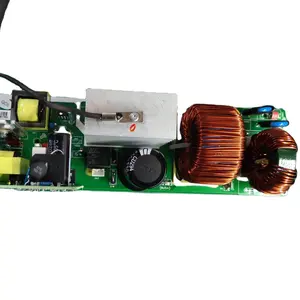Popular in your industry
















Top categories
About 2.3 inch oled display
Exploring the Versatility of the 2.3 Inch OLED Display
The 2.3 inch OLED display stands as a compact yet powerful component in the realm of visual technology. Predominantly utilized in various electronic devices, this display size is a popular choice for its balance between usability and space-saving design. OLED technology, known for its self-emissive properties, allows each pixel to produce light independently, leading to enhanced contrast ratios and true blacks.
Technical Specifications and Types
OLED displays come in various forms, with the 2.3 inch OLED screen being particularly sought after for its convenient size. This display category encompasses both passive-matrix (PMOLED) and active-matrix (AMOLED) options, catering to different application needs. The PMOLED variant is typically suited for simpler display requirements, while AMOLED is preferred for more dynamic and interactive interfaces due to its integrated circuitry.
Applications Across Industries
The application of the 2.3 inch OLED panel is diverse, ranging from consumer electronics, such as MP3 players and wearable devices, to more specialized equipment like medical devices and industrial control panels. Its small footprint makes it an ideal choice for portable gadgets that require a display that is both clear and energy-efficient.
Material Composition and Features
The small OLED display is constructed using organic materials that emit light when an electric current is applied. These materials are encased between two electrodes; one being transparent. OLED displays are renowned for their wide viewing angles, deep color reproduction, and swift response times. The 2.3 inch variant, in particular, offers a sufficient viewing area without compromising on the device's overall compactness.
Advantages of the 2.3 Inch OLED Module
Choosing a 2.3 OLED display comes with several advantages. Its energy efficiency is particularly notable, as it consumes less power compared to traditional LCDs, which is crucial for battery-dependent devices. Additionally, the thinness of OLED modules allows for slimmer device designs. The inherent flexibility of OLED materials also paves the way for potential future innovations in display shapes and applications.
Environmental Considerations and Durability
Environmental sustainability and durability are important considerations in the manufacturing and utilization of OLED display modules. The 2.3 inch displays are not only energy-efficient but also have the potential for a longer lifespan due to the absence of a backlight, which can reduce the number of components prone to failure. This size also strikes a balance between functional utility and material conservation, aligning with eco-friendly product development trends.























